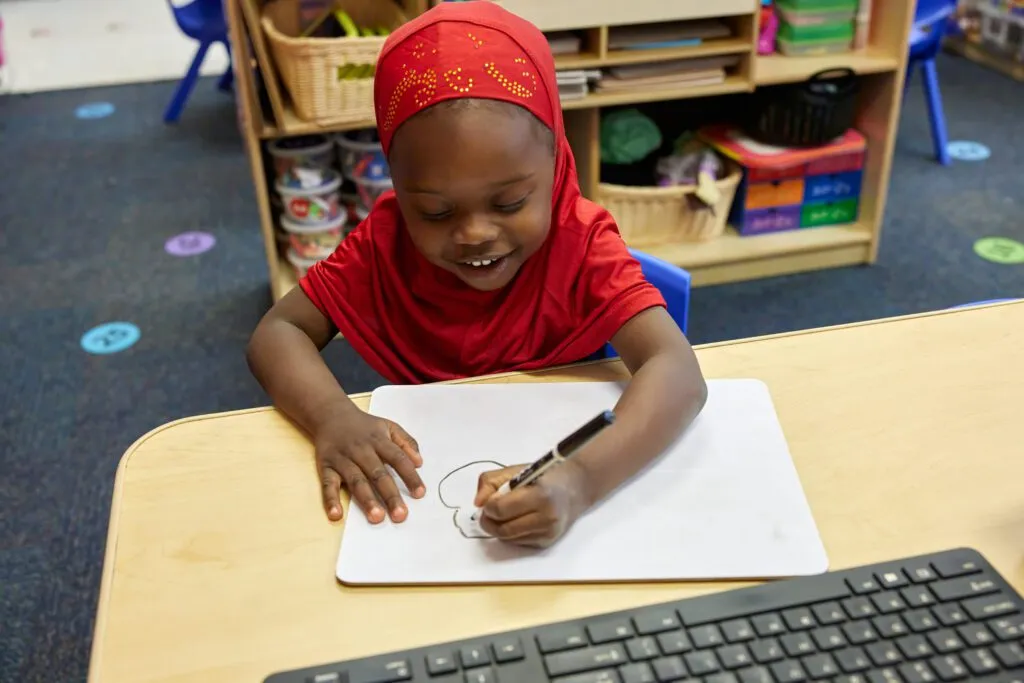Phonics vs. Phonemic Awareness in Preschool and Pre-K: What Every Administrator Needs to Know


Much of the discussion and research related to learning to read focus on what happens when children enter elementary school. Too often, early childhood education is left out of the conversation despite the fact that children are best prepared for kindergarten when they can arrive with a strong foundation in crucial literacy skills. Early childhood administrators shouldn’t have to figure out on their own how to support early literacy, yet we know this is the case. According to our 2024 survey, 72% of early childhood educators don’t feel very prepared to teach early literacy, and 39% are not familiar at all with the science of reading.
Within the field of early childhood education, there is much discussion about phonics vs. phonemic awareness: which approach is the “right” way to prepare children for literacy success? However, we can put the debate to rest: both phonics and phonemic awareness are essential pieces of early literacy instruction.
What is phonics?
Phonics is defined as a method of teaching people to read by correlating sounds with letters or groups of letters. Phonics relies on the “alphabetic principle,” meaning that there is an agreed-upon, knowable system for representing sounds with letters or groups of letters. An essential aspect of phonics is that it adds a visual component to language.
Phonics involves both decoding (reading words) and encoding (spelling words).
What is phonemic awareness?
Phonemic awareness, on the other hand, is about the sounds of spoken language. It is the ability to recognize the sounds that make up our language at the very smallest level, the phoneme level. Phonemic awareness instruction teaches children how to listen to and manipulate speech sounds and words.
When children practice and demonstrate phonemic awareness skills, they are manipulating the sounds of spoken language. For example, they may recite rhymes; repeat tongue twisters; break words into syllables; or remove sounds from words to create new words, such as removing the /b/ from bat to make at or adding /m/ to make mat.
According to a report from the National Reading Panel on teaching children to read, phonemic awareness is one of two of the best predictors of how well children will learn to read during their first two years in school.1 Teachers who understand how to teach and assess phonemic awareness skills set children up for success in learning to read.
What is the difference between phonological awareness and phonemic awareness?
While phonics relates to the visual, written representations of language, phonemic awareness relates to spoken language. Putting it another way, phonemic awareness refers to understanding the sounds of language, while phonics refers to understanding the ways written symbols correspond to those sounds.
This distinction of written language vs. spoken language is the key differentiator in understanding phonics vs. phonemic awareness.
Phonemic awareness is a critical precursor to learning phonics. The more children are aware of the sounds of oral language, the better equipped they are to learn about written language.
Phonics and phonemics in the classroom
Written English has what is called a “complex orthography,” meaning that the conventional spelling system is complicated. There are “rules” for spelling, but discussions related to sound-symbol correspondence can quickly become bogged down in “exceptions to the rules.”
However, preschool and pre-K educators can still foster both phonemic awareness and phonics skills in young children in developmentally appropriate ways.
Phonemic awareness can be promoted through the many ways that adults help children hear and manipulate the individual sounds of spoken language. Songs, rhymes, and games that play with spoken language are excellent choices for teachers to enjoy every day with children. For example, children can tap, clap, jump, or stomp to identify syllables in familiar words or use rhyming words to complete silly chants.
Preschool and pre-K teachers can also introduce children to an early understanding of sound-symbol correspondence. Since a child’s own name is typically one of the first words they learn to read and spell, it makes sense to begin there. Teachers can post each child’s name in a variety of places around the classroom—such as on each child’s cubby or coat hook— along with a photograph of the child.
Displaying written letters while engaging in play-based games that focus on initial sounds, such as The Creative Curriculum for Pre-K’s Intentional Teaching Experience LL48, “D Is for Door,” or Mighty Minutes activity MM260, “Letter-Sound Trouble,” is another simple, fun-filled way to introduce children to sound-symbol correspondence.
Putting it all together
While understanding the difference between phonics and phonemic awareness is an important aspect of early literacy instruction, it is more important to recognize that children need practice in both. Furthermore, there are developmentally appropriate ways to work on these skills that form a solid foundation for becoming capable, confident readers who can and do enjoy reading.
As program leaders, you can play a role in preparing educators to implement these developmentally appropriate practices. Providing science of reading-based professional development that is tailored just for early childhood educators will ensure teachers have necessary knowledge of phonics, phonemic awareness, and other literacy skills. Once you have equipped teachers for success, giving them the freedom to practice and implement these strategies within their classrooms is the best way to develop confident teachers and build the early literacy skills of the children in your care.
Free eBook: Five Everyday Practices to Promote Essential Skills in Language and Literacy
Download our free e-book on applying the science of reading in early childhood classrooms, which includes guidance for instructional leaders, as well as teachers.
NEW! Early Literacy Certification: Foundation of the Science of Reading
Our exclusive new certification is a comprehensive professional learning journey designed specifically to help early educators leverage the science of reading in their classrooms.
1. National Reading Panel (U.S.) & National Institute of Child Health and Human Development (U.S.). (2000). Report of the National Reading Panel: Teaching children to read: An evidence-based assessment of the scientific research literature on reading and its implications for reading instruction. U.S. Dept. of Health and Human Services, Public Health Service, National Institutes of Health, National Institute of Child Health and Human Development.


